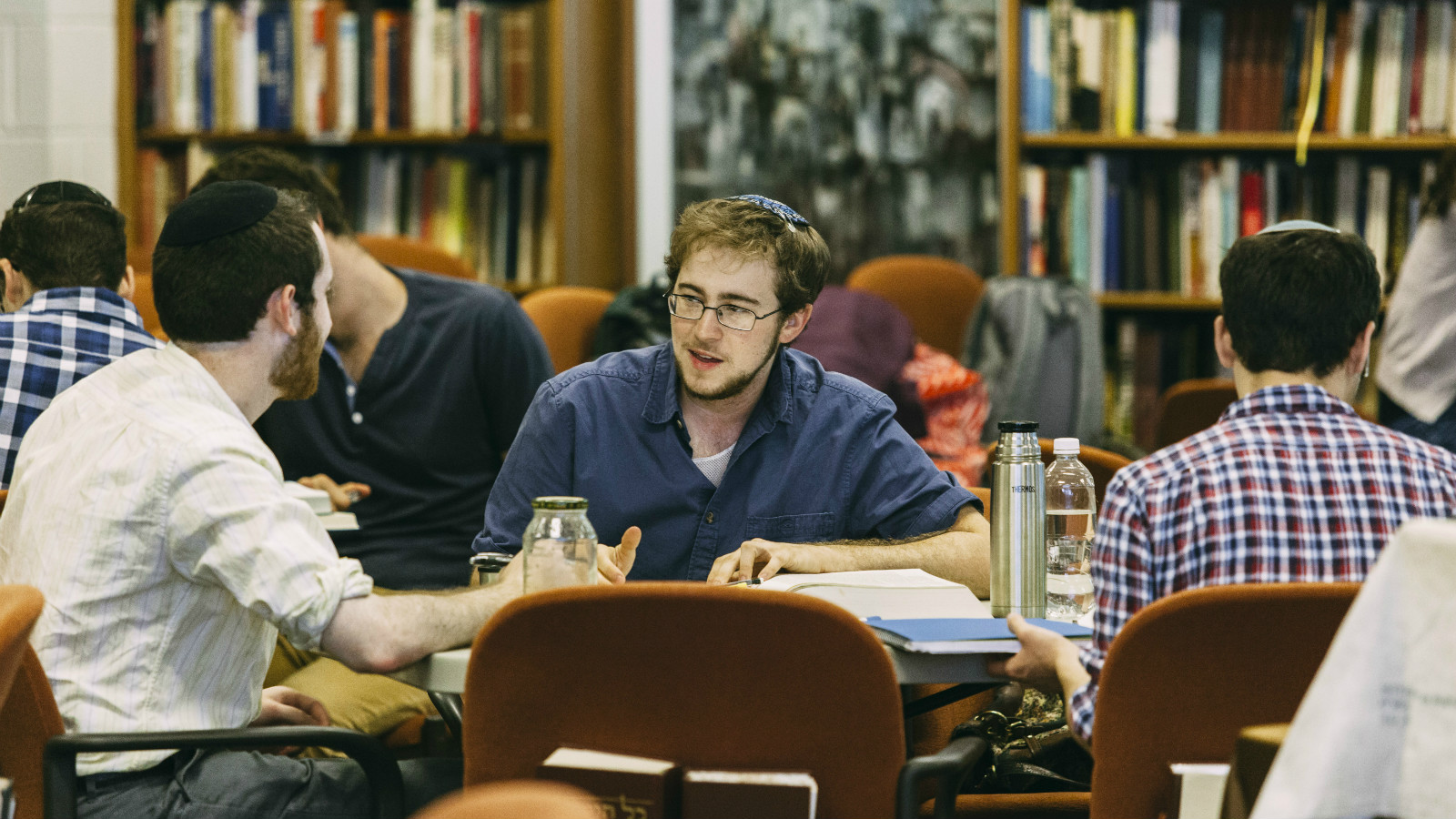As the geonic period came to an end, the need arose once again for a code that covered the entire halachic (Jewish legal) system yet was succinct and definitive. Several factors were at work. The increased volume of responsa and legislative enactments in various fields of the law necessarily involved the continuing expansion and development of the law. Moreover, for a considerable time, such activity had been going on not only in Babylonia, but also in North Africa and Europe. The fact that the number of Jewish centers had increased also led inevitably to marked differences in laws and customs.
While such differences had existed in the geonic period, and even earlier — between the Land of Israel and Babylonia, and between different yeshivot and localities within each of these centers — the differences became much more prominent as the centers in the diaspora increased in number and spread over a broader area.
These factors, and others discussed below, led to the composition of one of the greatest and most important works in the halachic system–a work that left its mark on the study and determination of halacha in every subsequent generation. This work is Sefer ha-Halakhot [Book of the Laws] by Isaac b. Jacob ha-Kohen Alfasi, known in Hebrew by his acronym, “Rif” [Rabbi Isaac of Fez].
Alfasi’s Biography
Alfasi was born in 1013 in the town of Qal’at Hammad in North Africa, which is why he is sometimes called ha-Kala’i (the Qala’ean). He studied in Kairouan and in the yeshivot of Nissim b. Jacob (Nissim Gaon) and Rabbenu Hananel b. Hushiel, and eventually settled in Fez, North Africa (hence his appellation Alfasi), where he taught Torah to many students.
With your help, My Jewish Learning can provide endless opportunities for learning, connection and discovery.
At the age of 75, he was forced to flee Fez after being denounced to the government; he moved to Spain, where, after a few months, he settled in Lucena, which was then a spiritual center of Spanish Jewry. After a short time, upon the death of Isaac b. Judah ibn Ghayyat, Alfasi headed the famous yeshivah in Lucena, where he attracted many students, including Joseph ibn Migash (Ri Migash) and Judah Halevi. Alfasi died in 1103, having designated Ri Migash to succeed him.
Alfasi’s Legacy
Alfasi was regarded in his generation as the leading talmudic authority in Spain, and he left a legacy of hundreds of responsa to queries addressed to him from all the communities of Spain and North Africa.
His major work, however, is Sefer ha-Halakhot, which generally follows the pattern of organization of Halakhot Gedolot of Simeon Kayyara, although with some significant differences. Like Halakhot Gedolot, Alfasi’s work is arranged in the order of the tractates of the Talmud, and presents the talmudic sources before stating a conclusion as to the governing law. The sources, moreover, are not merely cited but are summarized and discussed.
Practical Laws Only
Alfasi’s work is confined strictly to that portion of halacha that retained practical relevance after the destruction of the Temple. The work does not, therefore, encompass the entire Talmud, but only three of the six Orders, i. e., Mo’ ed, Nashim, and Nezikin, together with Tractate Berakhot (which covers the laws of blessings and prayers) in the Order of Zera’im, and Tractate Hullin (which deals with dietary laws and ritual slaughter) in the Order of Kodashim. The laws that are scattered through the Orders of Kodashim and Tohorot and still have practical relevance, e.g., the laws of the ritual defilement of priests, and the laws relating to Torah scrolls, mezuzah, phylacteries, and fringes (tzitzit), were codified by Alfasi in a separate work entitled Halakhot Ketannot.
Legislative Principles
Occasionally, when significant for a definitive legal ruling, Alfasi discussed the meaning of the talmudic passage and cited various views, in most instances indicating his own supporting or opposing arguments. In this respect, he undertook an important function, namely, to resolve many halachic problems that had previously been disputed.
In the face of the vast halachic material contained in the two Talmuds and the rest of talmudic literature, as well as the extensive halachic literature from the geonic era, Alfasi, in his Sefer ha-Halakhot, had to decide between conflicting opinions. This task had heavily engaged the halachic authorities in earlier periods. Rules for such decision making can be found throughout the Talmud and were augmented by the savoraim and geonim; indeed, treatises were written on the subject.
Alfasi applied these rules in determining the law. Not infrequently, he disagreed with the law established by the geonim and with Simeon Kayyara’s conclusions in Halakhot Gedolot.
Preference for the Babylonian Talmud
Alfasi frequently cited or quoted the Jerusalem Talmud, “the Talmud of the westerners” as he called it; but when the law in the Babylonian Talmud conflicts with that of the Jerusalem Talmud–even only implicitly–he followed the Babylonian Talmud. He explicitly established this as a rule of decision making, relying on the principle, settled as early as the geonic period, that ever since the time of Abbaye and Rava, “the law is in accordance with the views of the later authorities (hilkheta ke-vatra’ei) “:
“Since our [Babylonian] Talmud adopts the more lenient view, it does not matter to us that in the Talmud of the westerners [the Jerusalem Talmud] the act is forbidden; for we rely upon our Talmud because it is later [i.e., was redacted after the Jerusalem Talmud], and they [the sages of the Babylonian Talmud] were more versed than we are in the westerners’ Talmud. If they had not felt certain that this statement of the westerners should not be followed, they would not have ruled it permissible for the thing to be done.”
Halacha and Aggadah
Sefer ha-Halakhot also includes a certain amount of talmudic aggadah. The Talmud contains, in addition to its halachic material, a great quantity and variety of aggadic matter, including ethical and philosophical reflections and concepts, sometimes interwoven with legal discussion.
Alfasi undertook the arduous and difficult task of distinguishing between aggadah that has only speculative or anecdotal significance and aggadah that serves as a basis for halachic rules governing practical conduct. His keen discernment and deep insight enabled him to succeed in this undertaking.
For example, the Talmud states:
If a person prays for divine favor for his fellow when he himself is in need of the same thing, his need will be responded to first. . . . If a person complains to Heaven against his fellow [instead of taking the case to a human tribunal], he himself will be punished first.
Of these two aggadic dicta, Alfasi included only the second, because a rule governing practical conduct may be derived from it, i.e., that a dispute with one’s fellow should be brought to a court. Alfasi did not include the first because it does not involve a binding rule of conduct.
The broad inclusion by Alfasi of the main points of the talmudic discussion–both the halachic and the aggadic portions–earned for Sefer haHalakhot the additional title “The Abridged Talmud” (Talmud Katan); and the author himself apparently intended his work to be just that, in order to make it easier for people to engage in talmudic study.
An Authoritative Code
Alfasi’s Sefer ha-Halakhot was the crowning masterpiece of this genre of codificatory literature; and, thanks to its scope and contents as well as to the personality and authority of its author, it became the authoritative code of the halachic system. Maimonides‘ introduction to his Commentary on the Mishnah, after discussing the codificatory literature of the geonim, went on to say:
The halachot by the great master Rabbenu Isaac, of blessed memory, succeeded in replacing all of them [i.e., the other codes], since it includes all the decisions and laws that are needed in this era, i.e., the era of exile. In this work, he cleared up all the errors that had crept into the rulings of his predecessors. I have found difficulty in only a few rulings, certainly not amounting to even ten.
The halachic authorities of France and Provence were also appreciative of the magnitude of Alfasi’s achievement. Isaac the Elder, one of the great Tosafists, said of him: “A human being could never compose a work like this without the help of divine inspiration.” Rabad, the keen critic of Maimonides and of many other great halachic authorities, wrote of Alfasi: “I would rely on Alfasi, of blessed memory, even if he were to say that right is left. ”
Timeless Influence
Alfasi’s work supplanted many books of halachot written in his own time and even later; and an entire literature of commentary was composed around it, partly to explain and supplement it, and partly to query or defend it.
The tremendous influence exerted by Alfasi’s work in the Jewish legal system is evidenced by the fact that after some five centuries and the appearance of many other codificatory works such as Maimonides’ Mishneh Torah, Asheri’s Piskei ha-Rosh, and Jacob b. Asher’s Sefer ha-Turim, Alfasi continued to be one of the most influential authorities to be reckoned with in Jewish legal decision making. This status of Alfasi was authoritatively established by the rule of decision making declared by Joseph Caro in the 16th century as the basis of his works Bet Yosef and Shulhan Arukh:
Since I concluded that the three pillars of instruction upon which the House of Israel rests are Alfasi, Maimonides, and Asheri, of blessed memory, I resolved that when two of them agree on any point I will determine the law in accordance with their view, except for those few instances when all or most [of the other] halachic authorities disagree with that view and a contrary practice has therefore become widespread.
In this way, many of Alfasi’s rulings found their way into the authoritative Corpus Juris of halacha, where they remain to this day.
Talmud
Pronounced: TALL-mud, Origin: Hebrew, the set of teachings and commentaries on the Torah that form the basis for Jewish law. Comprised of the Mishnah and the Gemara, it contains the opinions of thousands of rabbis from different periods in Jewish history.
Torah
Pronunced: TORE-uh, Origin: Hebrew, the Five Books of Moses.



